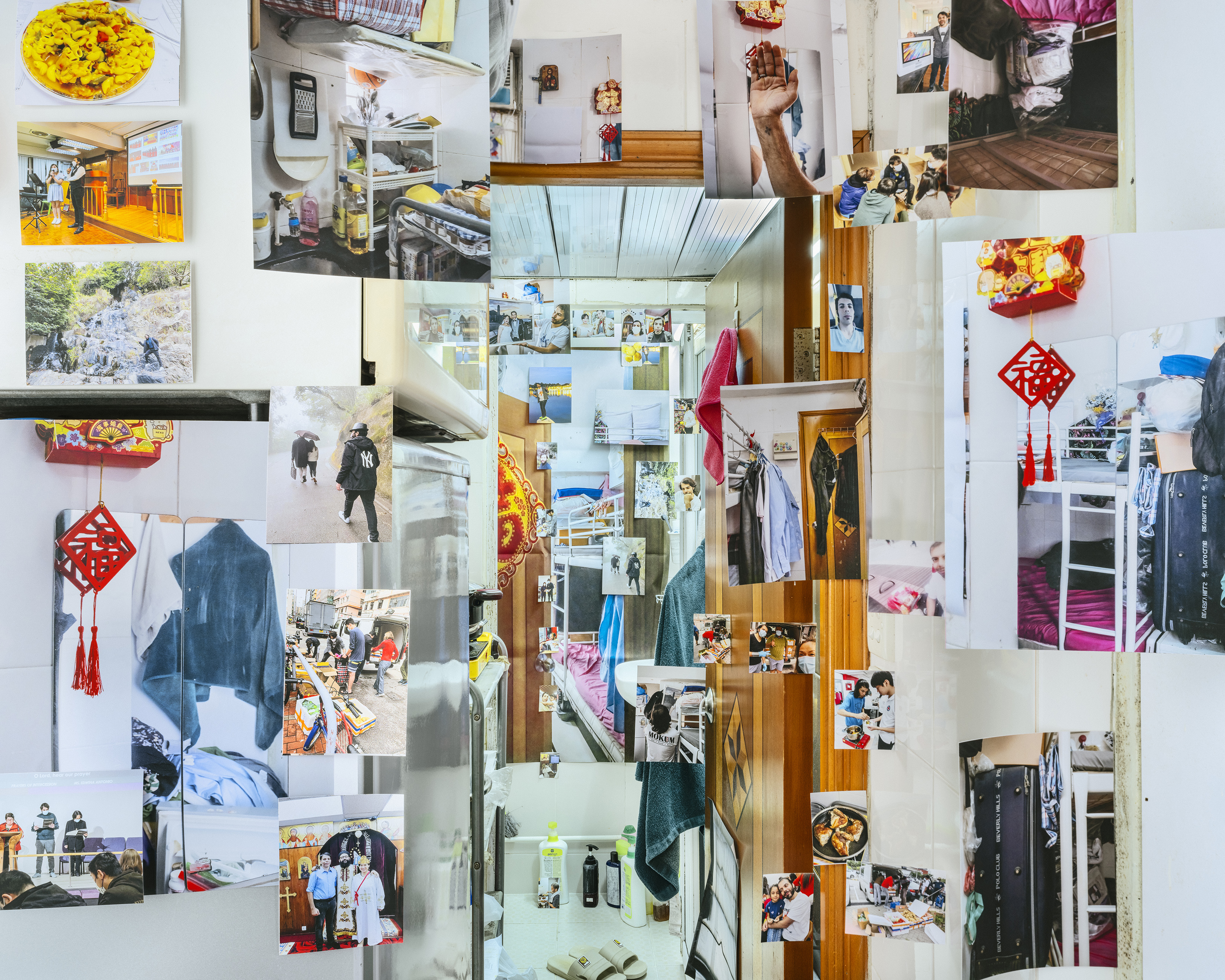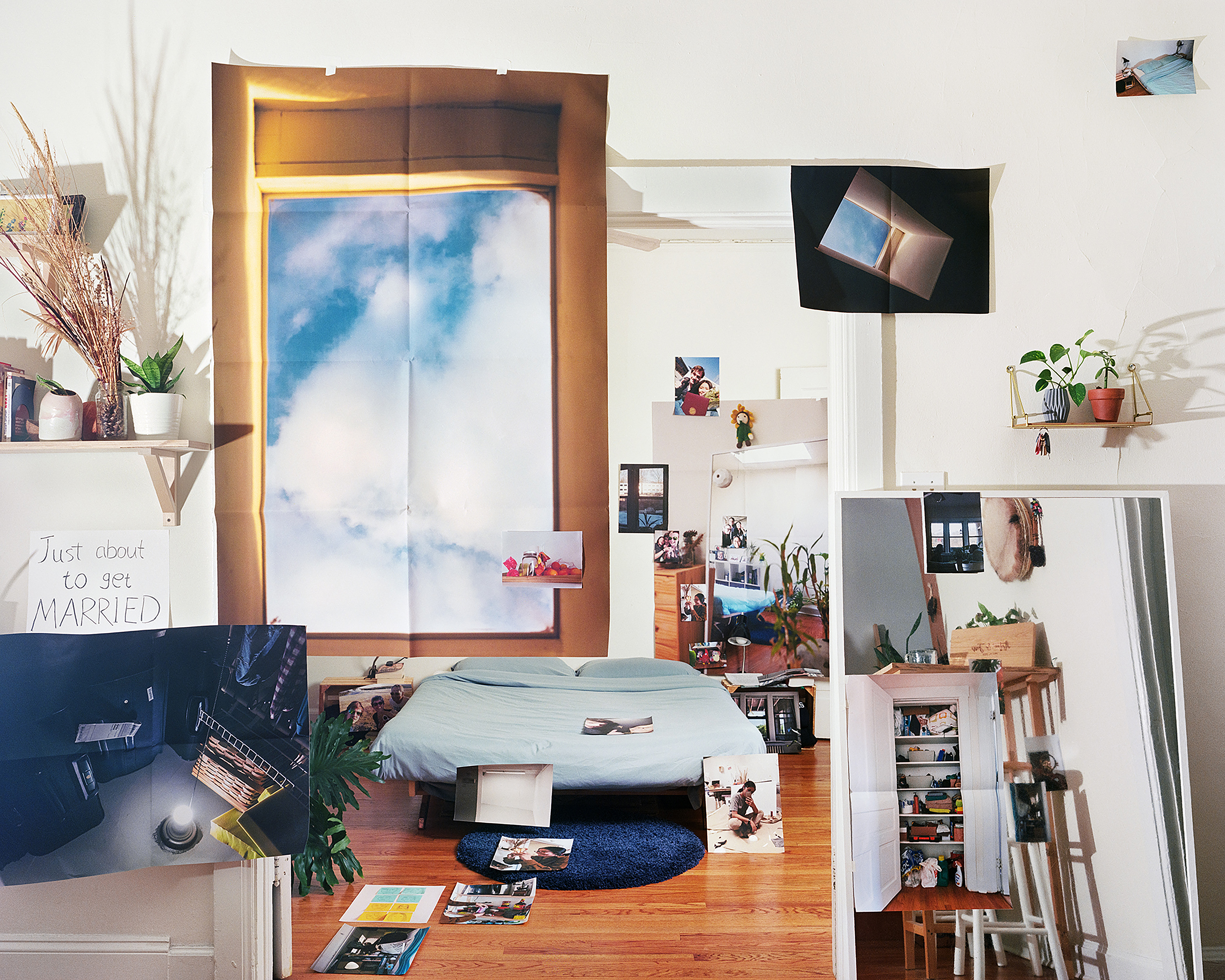Guanyu XU: Duration of Stay
Artforum CN2023/8/19
by Hindley Wang
read original in Chinese.
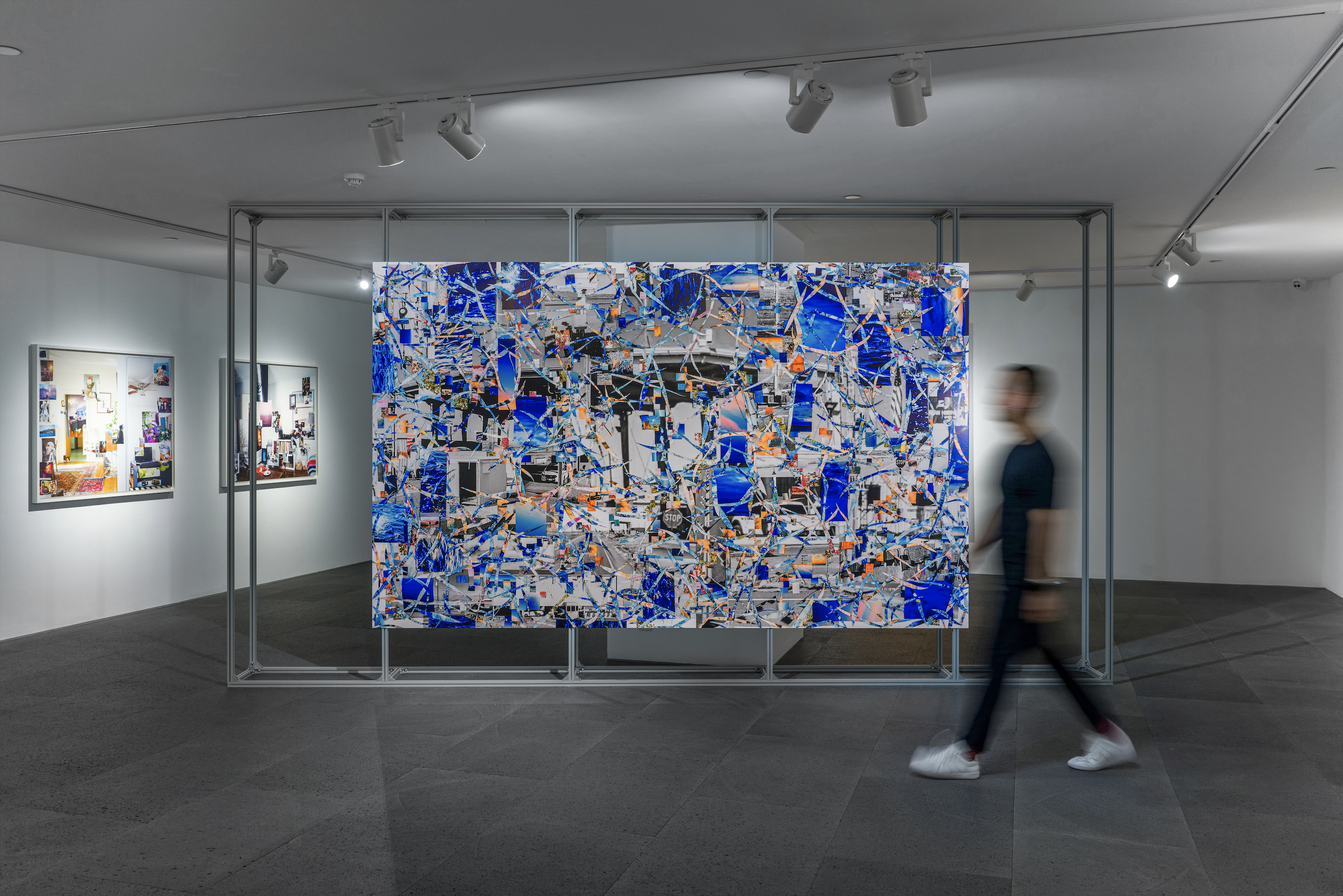

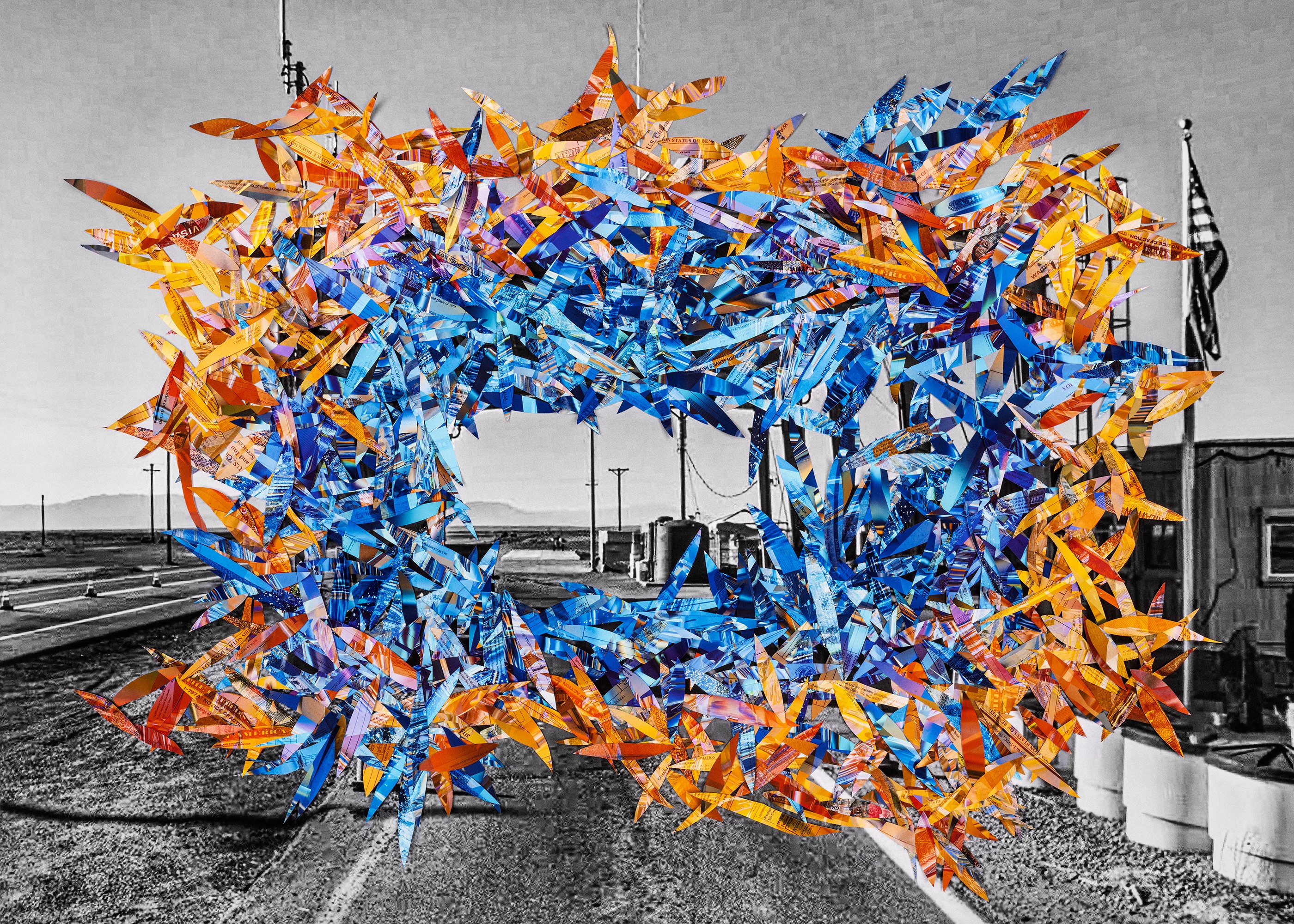
Xu's works involve tearing, fragmentation and reorganization that are not on the grounds of destruction or obliteration. It is rather a sort of brokenness held in forbearance. His syntax speaks discipline with disorder, docility with turmoil—like a glitch in the system, elegant malfunctions whose location of error is at once obvious and illusive. As in the large-scale photo installation in the center of the gallery Interior Border Checkpoint, Niland, CA, 2023, the tranquil ocean blues are cut into sharp strips and blades, crumbled in the wreckage of the peaceful sunset photos like stained glass, casting over the intricate black and white passages suggested at the site of the border checkpoint. Hypnotic like the surging undercurrent of a satellite cloud map, the image is full of scars but offers no exit.


In Sunset (Domestic Checkpoint, Neyland, California), 2023 and Coast (Domestic Checkpoint, Neyland, California), 2023, orange and blue photo fragments invade the black and white liminal spaces, obfuscating the line, drawn under a reality controlled by a terror reminiscent of the pandemic.
Inspections always strike like an ambush.
The “Traversable Landscape'' series is a reflection of the artist’s own experience at the internal border, confronted with the lack of proof and possible denial of re-entry: that before each passage for an non-native “alien”, looms perpetual unease from unvalidated belonging.
Also on display is the long-term project "Resident Alien" series, with three new editions completed in Hong Kong: staged at the homes of a domestic helper from the Philippines, a scholar from northern China, and an Egyptian refugee living in Hong Kong. The modus operandi remains consistent in the new site. In the temporary residence of those who are legally identified as “alien”, the artist arranges a collage of photos from their personal memories into their living environment, fabricating a temporary installation.
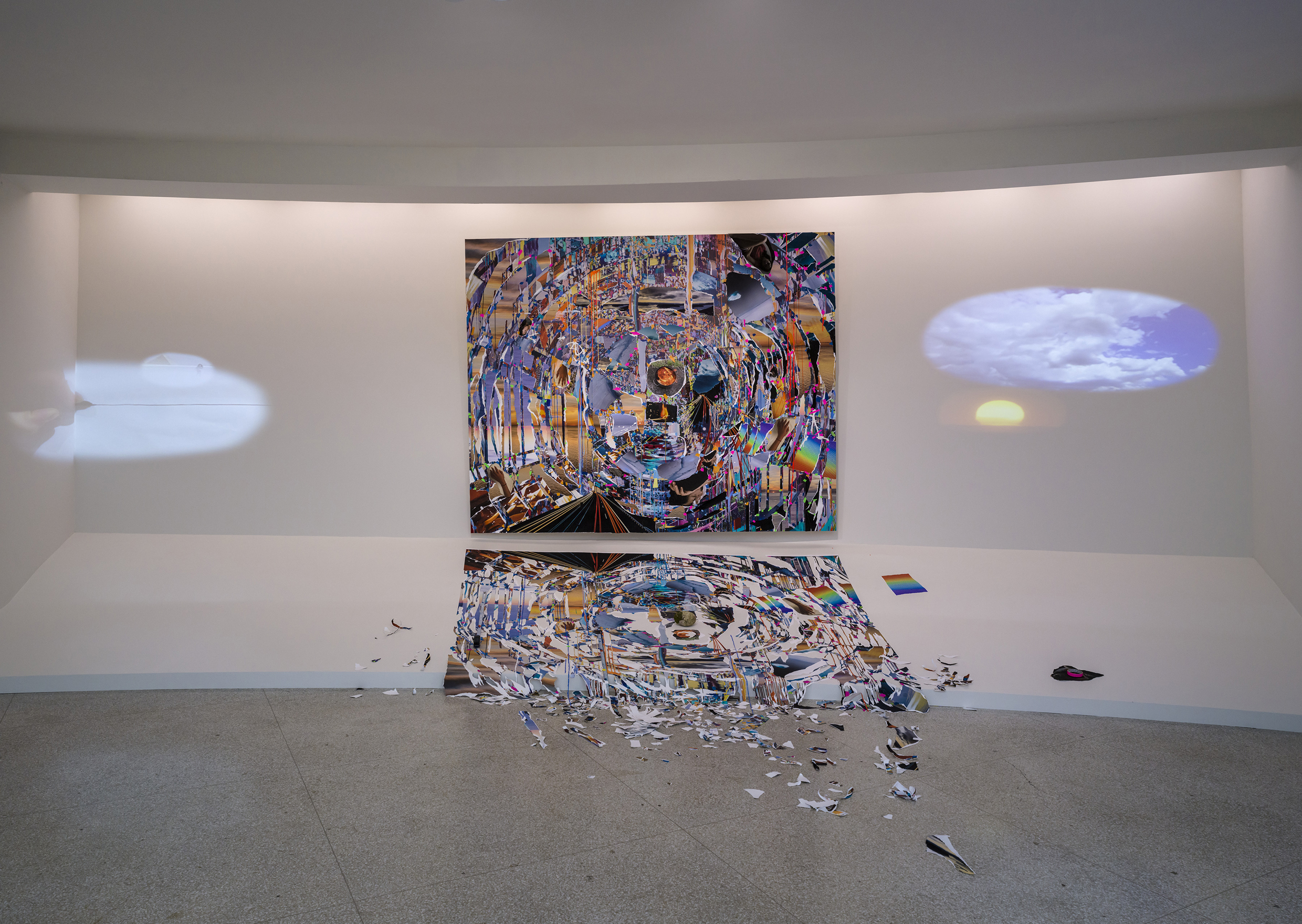
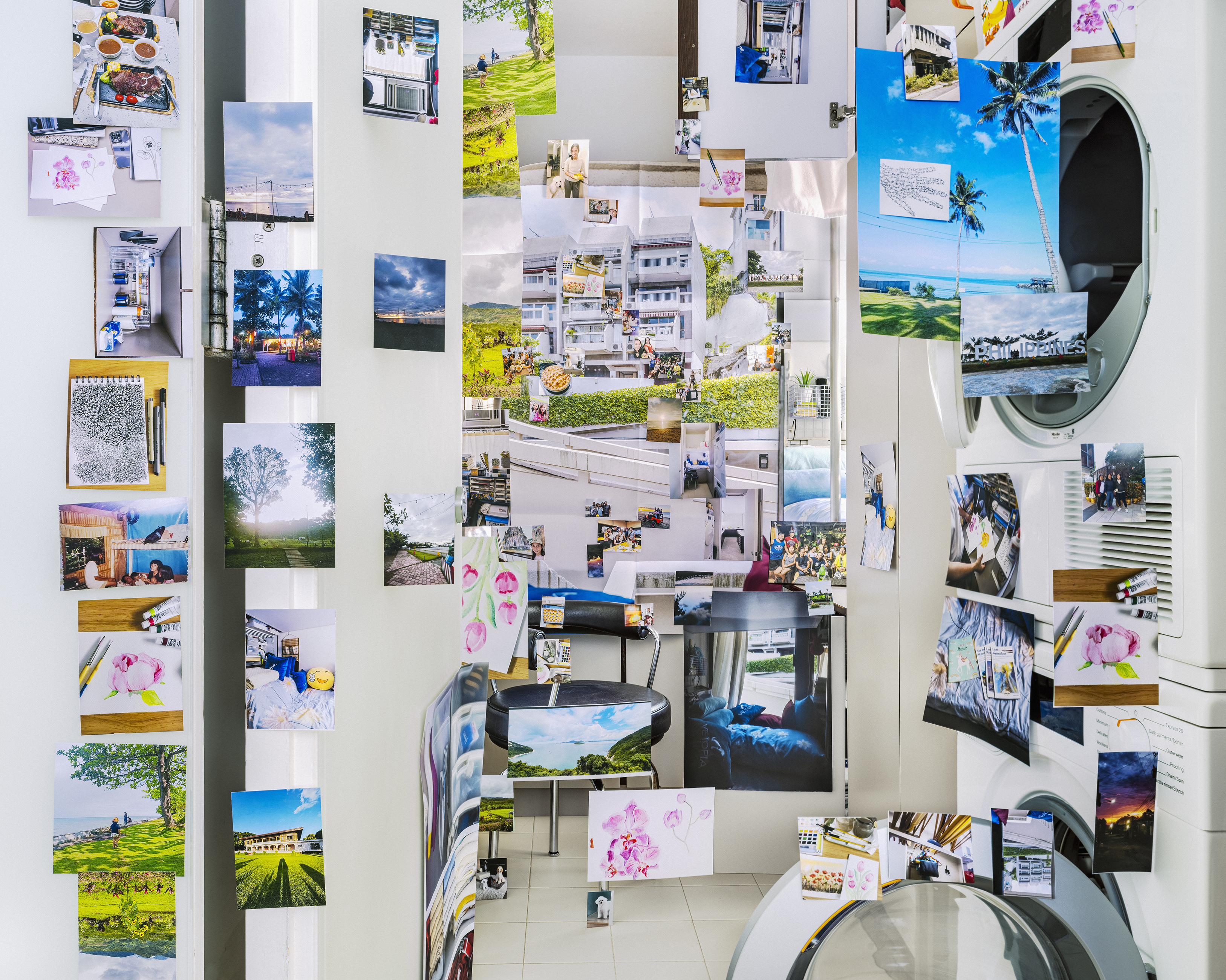
—the temporality captured through the interfaces in Xu’s work is more obscure and slippery—time feels specific yet null.
Effectuating “invalid” time through the activation of space is the core of Xu's breakthrough at the interface of photography and installation, time and space. "Resident Alien" arrests unidentified time in temporary physical unfoldings. The added pictures scatter the environment of each “alien” like clues and suggestions, interfering and referencing each other—deluding time and fraturing space. The work ends up looking like a detective board of an unsolved mystery—or the mystery itself. Representation in photography is reactivated by the installation in the physical space, and the temporary nature of the latter is retained by the temporal means of the former. The installation has ended, physicality sealed off, suspending ruptures. The past and the future hang, in the same air and time—passive, restless, fictive, hopeful—inhabiting the temporary.
